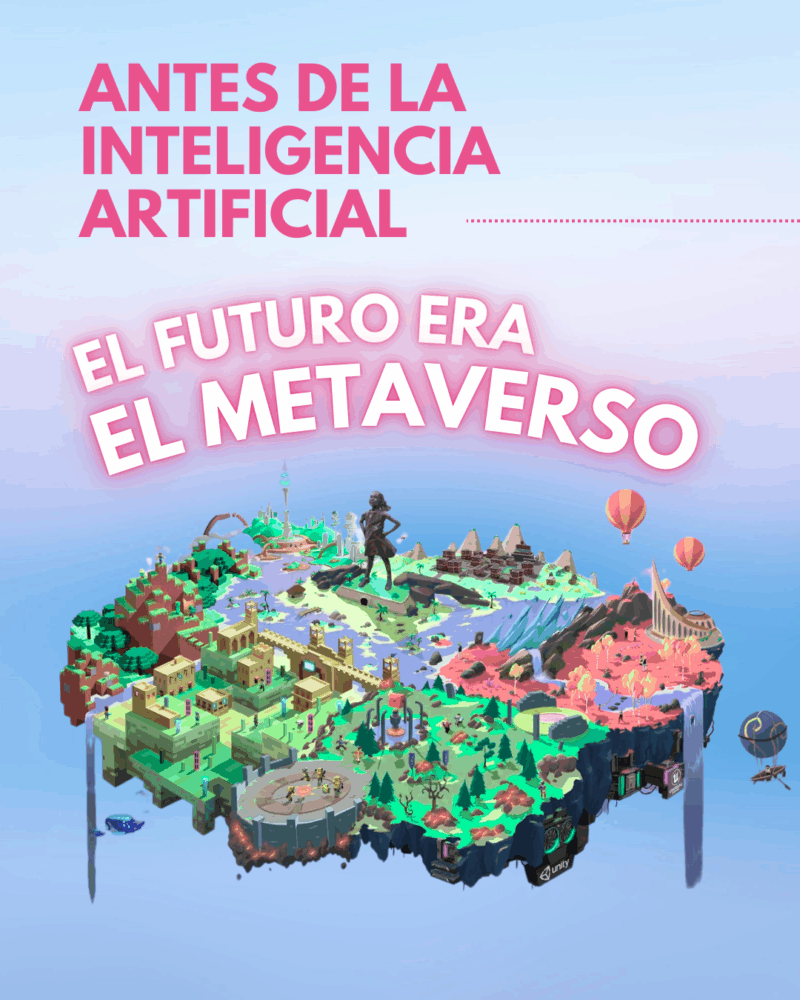
This content was written by Araceli Ramírez
Amid the COVID-19 pandemic, during 2021 and 2022, the metaverse emerged as one of the dominant tech narratives of the moment. What had long belonged to the realm of science fiction or existed as an experimental space for gamer communities suddenly became the next big thing for major tech platforms, companies across sectors, and even governments. The leading figure behind this push was Mark Zuckerberg, who not only rebranded his company from Facebook to Meta, but also announced investments exceeding $10 billion per year to build what he called “the next evolution of the Internet.”
Blending futuristic marketing with promises of structural solutions to social isolation, the metaverse was presented as the new space where we would work, study, shop, interact, and entertain ourselves. Virtuality would no longer be just an interface—it would become an environment in itself. Headlines multiplied: Barbados announced the opening of a virtual embassy in Decentraland; companies like Microsoft and Nike launched digital offices and stores; Sotheby’s held art auctions in 3D galleries. Even in countries like South Korea, governments began exploring public policies with metaversal components, aiming for a fully digitalized state.
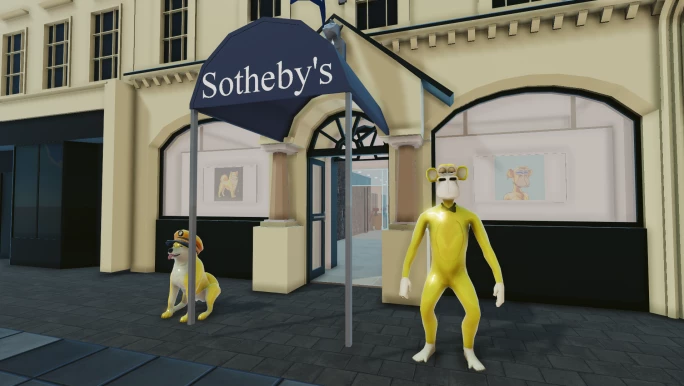
Source: Sotheby’s in Decentraland. Available at: https://www.sothebys.com/en/articles/next-stop-the-metaverse.
The promise was total: a multisensory, persistent, decentralized, and expanded internet. A supposed “mirror life” where we could experience new forms of existence without the physical constraints of the body, geography, or time. But behind that optimistic and homogeneous discourse, there was little discussion about how these technologies could reproduce—or worsen—the structural inequalities already embedded in digital environments.
Now, as media attention shifts toward artificial intelligence and the metaverse fades into the background, it’s worth asking: what did we learn from that hype? How does it relate to the current challenges of technological development? And what if, instead of designing the future from the same old perspectives, we imagined it from other realities?
In this context, the research Rethinking and Redesigning a Safe and Inclusive Metaverse, coordinated by TEDIC in collaboration with civil society organizations from Argentina, Brazil, Chile, Colombia, Costa Rica, Mexico, and Peru, offers both a critical and forward-thinking perspective. From an intersectional and decolonial approach, the study argues that just digital futures are not possible without the active inclusion of those who have historically been excluded from tech design: women, trans and non-binary people, Afro-descendants, migrants, people with disabilities, rural communities, and low-income populations.
The goal is not just to rethink the metaverse, but to question where it is produced from—and for whom. While big corporations continue designing platforms with commercial and standardized criteria, the digital lives of millions are shaped by surveillance logics, data extractivism, tech-facilitated gender violence, and symbolic exclusion.
But first… What Is the Metaverse, and why are we researching it?
The metaverse is not a single technology, but a constellation of emerging ones—such as virtual reality, augmented reality, blockchain, and artificial intelligence—that aim to create immersive, persistent, and interactive digital environments. In these spaces, people gather, work, shop, play, or socialize via personalized avatars and 3D settings.
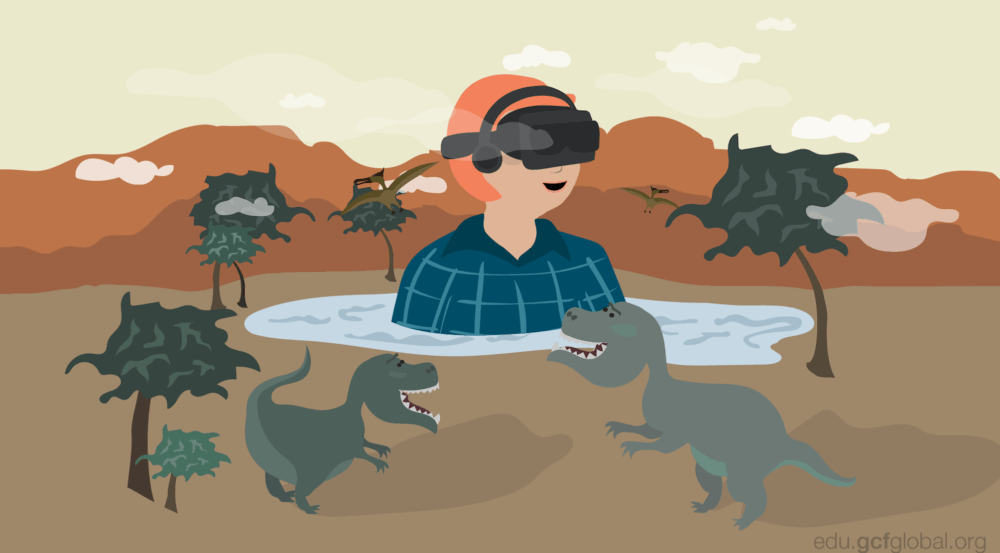
Source: Person using VR headset in an immersive environment. Courtesy of https://edu.gcfglobal.org/es/.
At its peak between 2021 and 2022, the metaverse was pitched as the next major digital revolution: a multisensory Internet without physical or temporal barriers, where everything we currently do online would take place in digital worlds—from business meetings and classes to concerts, shopping, and public services. This narrative was driven by large tech companies, but also by governments, investors, businesses, and media who saw in the metaverse a new frontier of economic opportunity, innovation, and social transformation. So why talk about the metaverse now, when public discourse seems entirely focused on AI?
Because tech promises don’t disappear—they evolve. And because the questions raised by the metaverse—Who designs these technologies? Who benefits? Who is left out? What rights are at stake?—remain urgent under any innovation narrative, immersive or intelligent. At TEDIC, we chose to investigate the metaverse not to follow a trend, but to offer a critical, context-aware perspective on how the digital future is imagined and built in Latin America. We know that visions of the future hold very real power: they shape public policy, guide investment, mold behavior, and exclude voices when not grounded in justice, equity, and participation.
A research rooted in Latin America
TEDIC carried out this research between 2023 and 2024 across eight Latin American countries, creating listening spaces with people from diverse backgrounds, all affected by various forms of inequality—gender, race, migration status, disability, class, age, sexual orientation, and geographic location, among others.
This work was made possible with support from seven civil society organizations with strong backgrounds in digital rights, feminism, and tech justice:
InternetLab (Brazil), Luchadoras (Mexico), Amaranta ONG (Chile), Fundación Karisma (Colombia), Sulá Batsú (Costa Rica), Hiperderecho (Peru), and Latfem (Argentina).
Through this collaboration, we spoke with over 90 individuals from different realities to understand how the promises of the metaverse are experienced, perceived, and challenged from the Global South—and what conditions are necessary to build truly inclusive and safe technologies.
Alongside the listening sessions, we mapped legal frameworks on gender violence, discrimination, and digital rights across the region to identify legal gaps and policy opportunities for action in virtual spaces.
We also conducted interviews and mapped concrete examples of good practices across areas that offer clues for imagining more livable digital futures: safe virtual parties with care protocols, innovative public policies on inclusion and digital accessibility, and groups designing technology through horizontal, feminist, and community-centered narratives.
Unlike many tech studies that adopt a technical or market-driven lens, this research centers the lived experiences of those historically excluded from tech design. Not to speak about them, but to listen, systematize, and elevate their knowledge, concerns, dreams, and proposals.
Representation, accessibility, and participation: The missing pieces
One of the study’s most consistent themes is the tension between ideals of representation and the actual practices of tech design. Across all countries, participants noted that most avatars in immersive environments reflect normative bodies: thin, young, able-bodied, Eurocentric, binary, hyper-stylized. Aesthetics, language, and interaction logic reinforce homogenous models that exclude a large part of the world’s population.

Source: Avatars from Meta Horizons World, Meta’s metaverse platform.
“I’ve always been fat. And all the avatars are thin. It might seem silly, but when your body isn’t there, it’s like you’re not allowed in,” said a young pansexual woman from Argentina.
On top of that, there’s the structural issue of access. For many people—especially those in rural, low-income, or non-urban settings—the metaverse simply isn’t an option. It requires expensive devices (like VR headsets or high-end computers), fast and stable internet, specific digital literacy, and above all, cultural capital that isn’t equitably distributed. This means large parts of the population haven’t even heard of the metaverse or see it as alien, inaccessible, or irrelevant to their lives. The access gap isn’t just technical or economic—it’s also symbolic, political, and cultural. When innovation happens without dialogue with diverse realities, gaps widen: worlds are built for the few, based on user models that exclude the rest.
“Can you imagine someone using a white cane or a wheelchair in the metaverse? I haven’t seen that anywhere. But what worries me more is not whether virtual ramps exist—it’s whether anyone dares to imagine different bodies without hiding them,” said a blind activist from Paraguay.
The study also highlights how participation remains severely limited. Interviewees weren’t invited to any design or consultation processes—and most didn’t even know such processes existed. As it stands, the metaverse is being developed as a closed, extractive, and top-down infrastructure.
Recommendations for a collective redesign
The research doesn’t stop at diagnosis. Based on participant dialogue, legal review, and organizational experience, we offer concrete recommendations to build more just, accessible, and caring immersive technologies:
- Inclusive and participatory governance, with binding consultation and decision-making mechanisms for historically excluded communities.
- Design from functional and bodily diversity, involving people with disabilities, trans people, racialized groups, and migrants from the earliest stages of development.
- Promotion of Global South content, languages, and aesthetics, not as token “local color” but as legitimate centers of technological and cultural production.
- Effective digital rights protection, including privacy, informed consent, accessible reporting channels, and effective redress.
- Sustainability focus, addressing the environmental, energy, and emotional impact of immersive technologies.
- Emphasis on relationships, affectivity, and collective wellbeing as core design principles, as opposed to logics of endless consumption and productivity.
What’s at stake when we talk about the future
Today, the metaverse no longer dominates tech discourse—overshadowed by generative AI and other agendas. But it remains a space of contention and opportunity. The debates it sparked—Who designs? Who accesses? Who is excluded? Who decides what is livable?—are just as urgent now.
This study doesn’t aim to offer a “better version” of the metaverse. It seeks to open space for other ways of thinking about tech development: ways rooted in plurality, care, and the right to exist and inhabit worlds where no one needs permission to be.
“I imagine a metaverse where girls and teens can ask AIs to teach them about gender and diversity. Where there are clear reporting channels and personal data is protected,” said a lesbian woman from Peru.
Because futures are not inherited—they are designed. And design, when done collectively, can be a form of justice.
To download the full research click here.


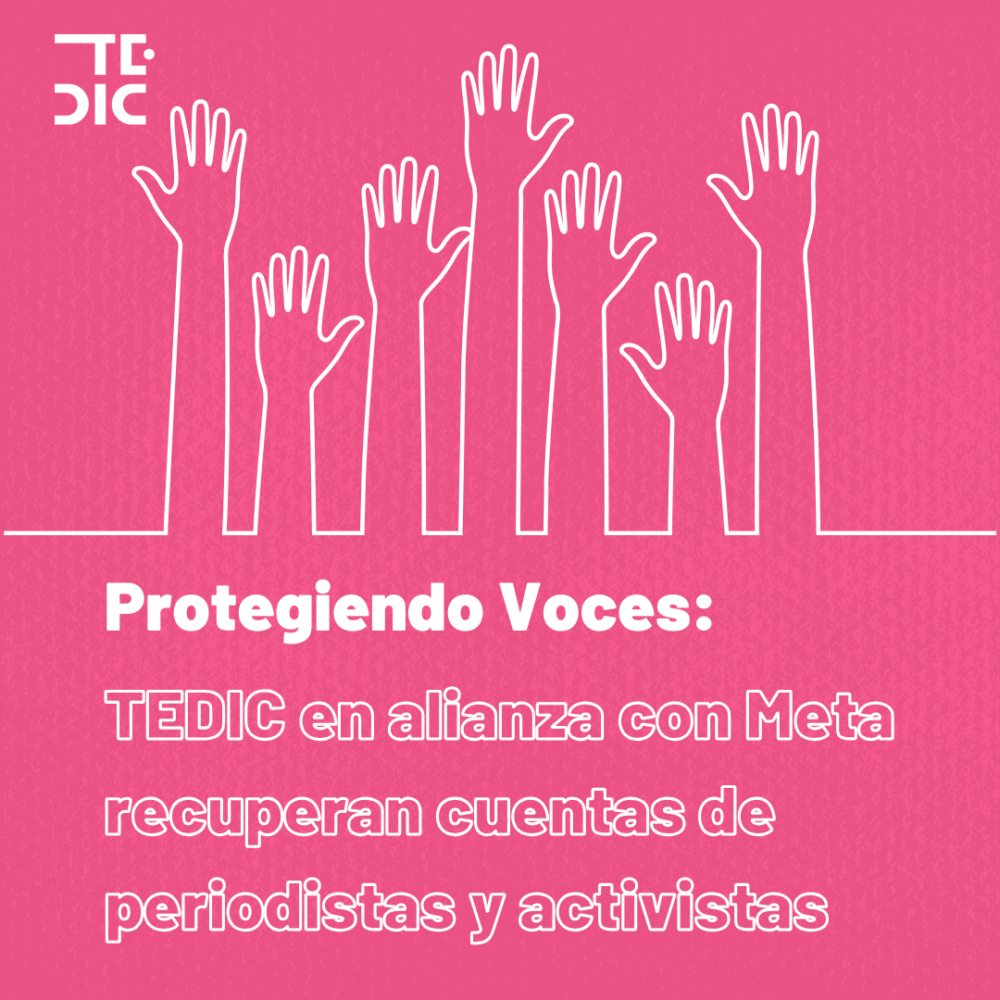 Defending those who defend us
Defending those who defend us 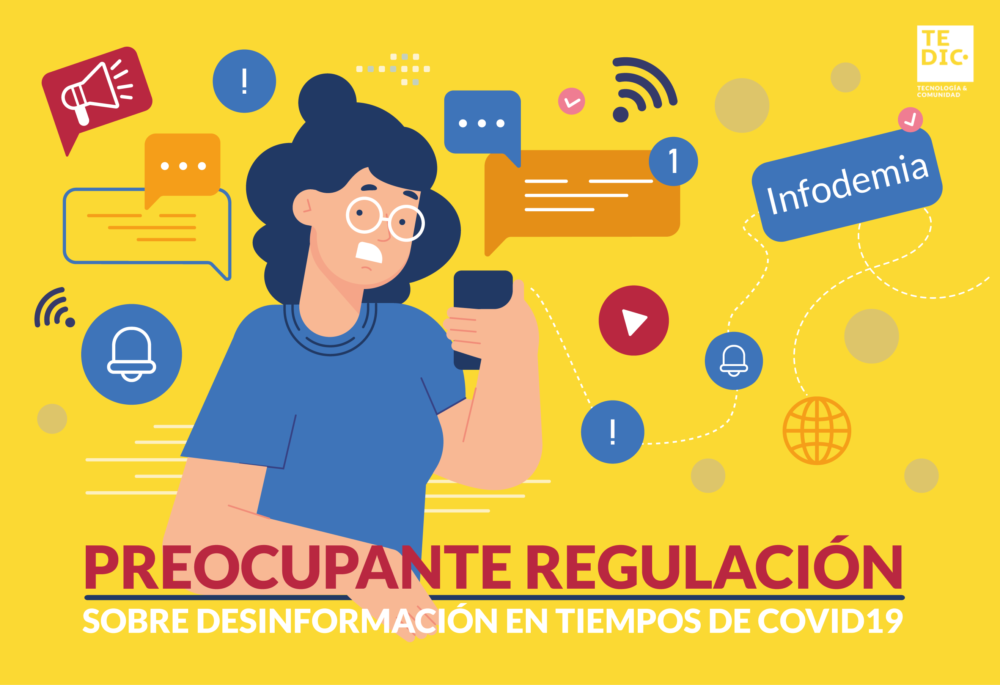 Worrisome regulation on disinformation in times of COVID19
Worrisome regulation on disinformation in times of COVID19